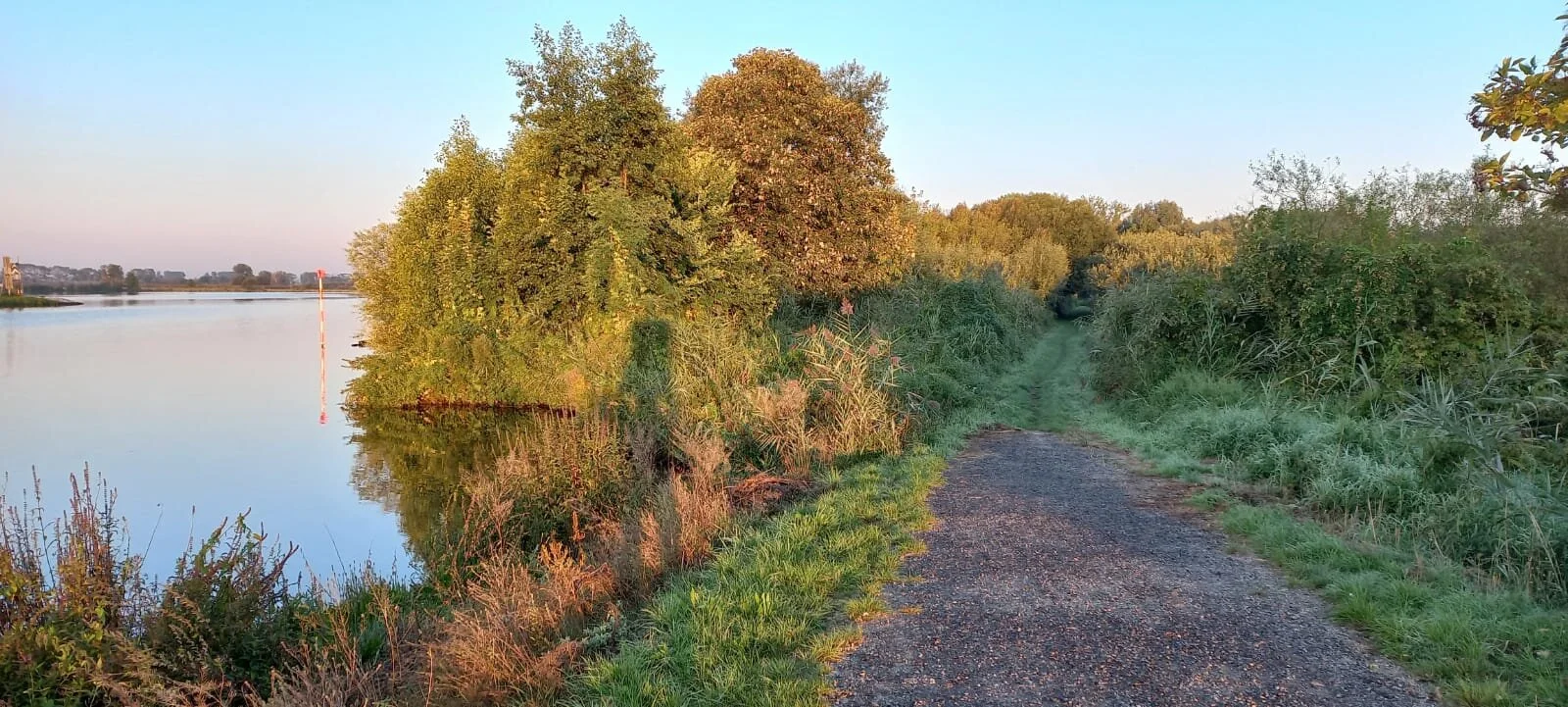Brands need to find this little sweetspot between themselves and the agglomeration of needs, desires and aspirations of people out there. This overlap is exactly the point where narration comes into play. It connects with people emotionally – and creates relationships. Narration is an approach to charge this sweetspot with life.
Jacques Chlopczyk: Could you shortly explain what you do?
Marco Ruckenbrod: Well, my name is Marco and I help brands to develop themselves further and to co-create their future. This includes to find answers to very basic questions such as ‚What does the brand stand for?‘ or ‚How does the brand look and feel like?‘. Besides these quite fundamental questions I also help companies to create compelling narratives around their brands, products and services.
Jacques: When I think about brands, and this is not my home turf, I imagine brands being about semantics and meaning. How do you strategize what something means?
Marco: D’accord! Being a real brand is about answering the core questions of ‘What do I stand for?’ and ‘Why do I exist at all? What’s my reason for being?’ A brand is not just a logo or a typeface, it is about meaning. But again, it’s not about defining it. You need to change perspectives and ask yourself: ‘What is our brand’s meaning and role in people’s life?’ To understand people first is a good starting point to ‘strategize“ what something should mean.
Jacques: So, the question is what the function of the brand is in the eyes of the customer?
Marco: Yes. Brands need to find this little sweetspot between themselves and the agglomeration of needs, desires and aspirations of people out there. This overlap is exactly the point where narration comes into play. It connects with people emotionally – and creates relationships. Narration is an approach to charge this sweetspot with life.
Jacques: When I look at the field, many people talk about story- telling. That brands should be storytellers. Why do you think it is a good perspective?
Marco: To be honest: I wouldn ́t agree that this is a good perspective. It is a bit of old-fashioned thinking, because it assumes that the brand itself is the author. If you go back through the decades, this is where we started many years ago. Brands saw themselves – and they still do – as the authors of stories. And don’t get me wrong: it is still something brands need to do, but it ́s not the whole story. Because as time passed by, the way how brands communicate evolved. Just think of the Marlboro brand. They
did not only tell a story but they created a whole narrative world around their brand – the Wild West as a setting, the Cowboy as a hero and the feeling of freedom and liberty as the main theme of the brand – and entered a next level, of how to deal with narration. But what we see today is that some brands even turn themselves into platforms for stories. The brand’s ecosystem offers a stage for stories written by others, e.g. by influencers or by customers. It is no longer just a question of storytelling but more a question of storysharing. It’s a shift from being the author to becoming a publisher.
The brand’s ecosystem offers a stage for stories written by others, e.g. by influencers or by customers. It is no longer just a question of storytelling but more a question of storysharing. It’s a shift from being the author to becoming a publisher.
Jacques: Let ́s stay a bit with stories. What makes a good story from your point of view? What are the ingredients for good brand stories?
Marco: Doubtless, there are lots of ingredients a good sto- ry contains. But from my point of view, there is one angle every good story absolutely requires: it’s the conflict. The conflict is the lifeblood of a story. Robert McKee once said: „Nothing moves forward except through conflict“. And I totally agree with him.
When it comes to brand stories, ironically we can identify a paradoxon: although good stories need a conflict, many brands lack conflicts. I believe that a lot of brands indeed try to tell stories but honestly most of these stories are not worth to be told. Because they hide any kind of conflict. They are either hiding a cultural tension or just touching it softly. And this cultural tension is the sweet spot between brands and people I was speaking about shortly before. Brands should seek for their area of conflict and then jump into it courageously. This is a great starting point to build up strong relationships with people.
Jacques: Sometimes, advertisements have a “Teflon” feel for me. I look at them and see shimmering surfaces, but nothing behind. Maybe the conflict is what is behind.
Marco: Oh yes. I really like your metaphor of a teflon-like brand. I would call these brands just boring. These brands bore the hell out of us. Unfortunately, most brands are boring. And the answer is quite simple: as mentioned before, they lack conflict. A brand that has been quite successful during the past years is Dove. I mean, Dove is a well-known and not very exotic example, but what they are doing quite well is to build their entire brand on a conflict scenario and the cultural tension of beauty. A great ex- ample of how to play with conflict on very different levels: the individual sphere, the interpersonal sphere and the societal sphere in the most broaden context. Dove creates an entire world about these conflict levels. The brand was brave enough to move into this conflict-based territory.
Jacques: At the same time, stepping into a conflict means to take a stand; a position, right? I believe that there is a certain hesitation to take a stand?
Marco: Absolutely. Stepping into the world of conflicts means really to take a stand. A brand needs to be very steady and strong to do so. And most of the brands aren’t. But I really have the feeling that this state of mind is about to change because many marketeers started to discuss the purpose of their brand. They are discussing the question ‘Why does our brand exist?’ I really welcome and appreciate this shift, as it deepens the whole thinking about brands.
Stepping into the world of conflicts means really to take a stand. A brand needs to be very steady and strong to do so.
Jacques: You are working with the concept of narrative territo- ries for the development of brand strategies. Could you explain the concept to me?
Marco: Working with narrative territories means to draft the possible development of a brand in the future. You could describe it as a scenario technique working with alternative narratives about the brand. It is a question of how a brand sees and even drafts its own future actively – it’s about the question what’s the story a brand intends to write about itself. What’s the promising direction the brand wants to develop itself into?
When you think about the automotive industry, you have different vectors, different critical topics that impact the whole industry: e-mobility, automotive driving, connectivity. These are topics every brand in this industry has to deal with and give a clear answer about how it wants to position itself regarding these topics.
Jacques: So narrative territories is really about how brands approach the future. To use a metaphor: It is about creating a landscape and then mapping a path.
Marco: Exactly. You can call it a path or maybe let’s better name it a journey. You can really compare this approach with the basic ingredients of storytelling. Because every story starts with an initial event, let ́s call it starting point A. Through the plot and its dramaturgic structure, the story moves more and more to an end point B. When I start to work with brands, they often know where they are right now. This is the starting point A of their journey. But the exciting and very fundamental question is where they want to go. So, what’s their intended end point B? Thereby, it is really helpful to develop different scenarios of the end point B in order to make the right decision.
After making this strategic decision brands are ready to create, establish and evolve their narratives. The more interesting their conflict scenario is, the more compelling is their narrative and the more intensive is the bond to the people out there.
The more interesting their conflict scenario is, the more compelling is their narrative and the more intensive is the bond to the people out there.
Jacques: You said that relevance only comes with conflict. Would you say that Dove with this conflict around the meaning of beauty in our societies created a narrative territory and they are now working within it?
Marco: Absolutely. As mentioned before, Dove is a great example of how to deal with conflict in very different ways. The Dove case shows that a brand does not actually invent such a narrative territory. I mean this whole territory of beauty is so fundamental to us human beings that it wasn’t a brand that invented it. Obviously, Dove didn ́t create it but they are the brand that was brave enough to move into this territory in a way which was true to the brand, highly relevant to people and very truthful at all. And this is exactly what people are very sensitive about: It is not just nice advertising. They see a brand which deals with this cultural tension seriously. The brand does it in a very credible way. They take over responsibility. And thereby Dove shows impressively how rich, substantial and multi-faceted this conflict scenario is. The brand is able to create dozens of campaigns and actions out of it. They are able to cultivate this territory for years. And again: they haven’t invented it. They were just brave enough to enter it and to own it very consequently.
Dove shows impressively how rich, substantial and multi-faceted this conflict scenario is. The brand is able to create dozens of campaigns and actions out of it. They are able to cultivate this territory for years.
Jacques: If someone wants to develop a new narrative territory, what should they focus on?
Marco: They should drop me a line. Seriously, I’d recommend to do three things: At first, become clear what your initial position looks like. What’s your starting point A? Secondly, figure out how many possible end points B are out there – and how does each of them look like? The third step is to draft your individual narrative journey from A to B. And this includes the conflict scenario. This part is crucial. As mentioned before, it’s the core. The lifeblood. Ultimately, you have defined your narrative territory. This is your new playground. Enjoy!
Jacques: We talked about two important movements in the feld of marketing. One shift is from some kind of stories to stories that take a stand and speak about things that matter to people. And the second one being that brands move from being “just” storytellers to being curators and publishers.
Marco: Yes, exactly. I agree that the second one really is a shift that goes through the entire marketing business driven by the digitalisation. The first shift is stimulated by the purpose debate many brands started to lead. I believe the most promising approach is when you try to combine both streams. From a strategic point of view, it is crucial to define your narrative territory first – a territory that should be built on a cultural tension. If this tension is strong, rich and multi-faceted (remember Dove!) enough you are able to offer a very exciting stage to others for sharing their stories around your brand. This is when a brand becomes a platform for storysharing. And it’s the brand’s proof point for its relevance to people.
Marco will host a workshop at
#BST2020 POWER OF STORY | STORIES OF POWER





















